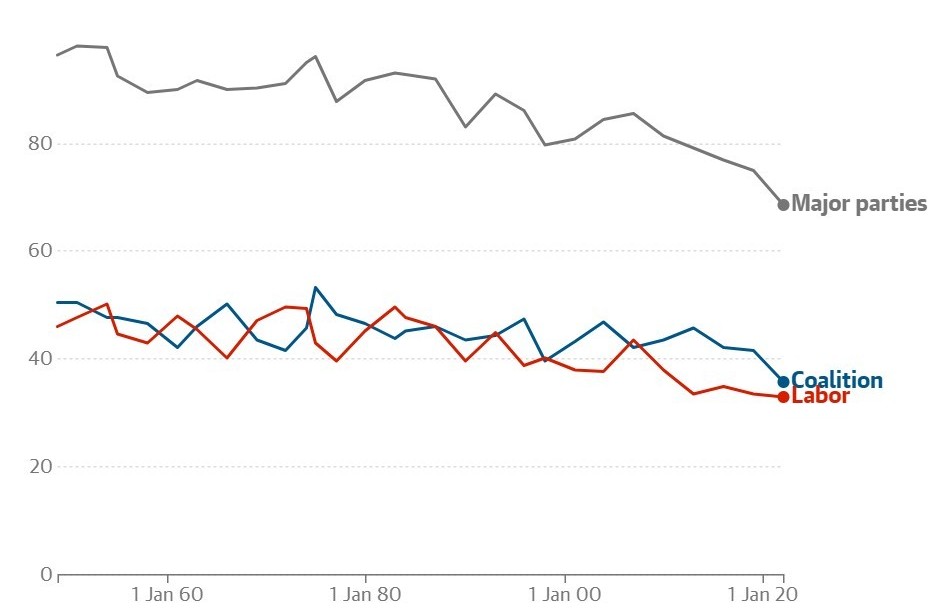
We have a choice of Anthony Albanese or Peter Dutton becoming the next prime minister. But they could be elected on a minority of votes, as more people become increasingly disillusioned with the major parties’ rule for the rich.
It has been decades since there have been any real differences between the Labor Party the Liberal-National Coalition. These days, they are virtually indistinguishable.
Without any consultation, Albanese simply adopted key policies from the wildly unpopular Scott Morrison-led Coalition government.
Labor was voted in on the promise it would be progressive. Besides agreeing to AUKUS, Labor rolled over on the Coalition’s Stage 3 tax cuts for the rich. Now it has announced it will not proceed with a revamp of Australia’s main environment law that would include an independent environment protection authority.
These are all reasons why popular support for both parties has continued to collapse.
Two years ago, the primary vote of the Labor Party and Coalition stands at 68.5% — historically, an all-time low. Nearly 98% of votes went to the two major parties in 1951.
While polling shows the Coalition as at January 29 has increased its primary vote by 3.6%, and is at 39.3%, it is worth noting that in 2022 the primary vote for those not intending to vote for either major party was a significant 32%, according to The Australia Institute (TAI).
While the corporate media tends to portray the major parties as the only show in town, their own memberships are also in decline. The Guardian reported in 2020, that Labor’s membership is about 60,000 and the Liberals have about 40,000, down from 197,000 in the 1950s.
primary_vote_for_major_parties_may_2022.jpg

The total membership of Labor and the Coalition now most likely sits comfortably lower.
There are material reasons for the collapse in support for the traditional parties. When promises to make housing affordable, tackle the climate emergency, reduce the cost of living and lift wages are only election slogans, dissatisfaction sets in.
Disengagement from the political process, as smaller party units or conferences of members cease to have any influence over policy, is another reason for the collapse in support.
Others say the major parties’ transactional marketing approach is another.
This trend appears irreversible, given the major parties are singing from the same neoliberal song sheet.
The kindergarten teacher, data-entry clerk, nurse, construction worker and ride-share driver are all poorly paid and overworked: no wonder many will look for other options at the election.
According to research from TAI, published last October, votes for non-major parties are at more than 30% in the House of Representatives.
The combined primary votes for minor parties and independents in the 1980 federal election accounted for just 8%. Forty-two years later, in 2022, this figure was 32%.
Since Labor has not delivered on key promises and the election of United States President Donald Trump, there is a real prospect of Dutton becoming prime minister, in a minority government.
While we hope that Trump’s reactionary decrees winding back civil rights and threatening wars with Canada, Panama, Denmark and China give Australians cause to pause, we also know that the left has to redouble its efforts to win people to real solutions.
As the cost-of-living crisis continues to bite, people can become disengaged and simply go along with the populist blame game that Dutton likes to engage in.
Hope does lie in the partially successful global campaign to force Israel to the first stage of a ceasefire in Gaza, and a younger generation’s understanding of the disasters of colonisation, the causes of climate change and the need for rights for all minorities.
The romantic poet Percy Shelley once wrote, “We are many, they are few.”
Elections provide a focus, but they are no substitute for communities in struggle, which, to become a potent force for change, have to involve organising the “many” in the streets and workplaces.
It’s a big challenge.